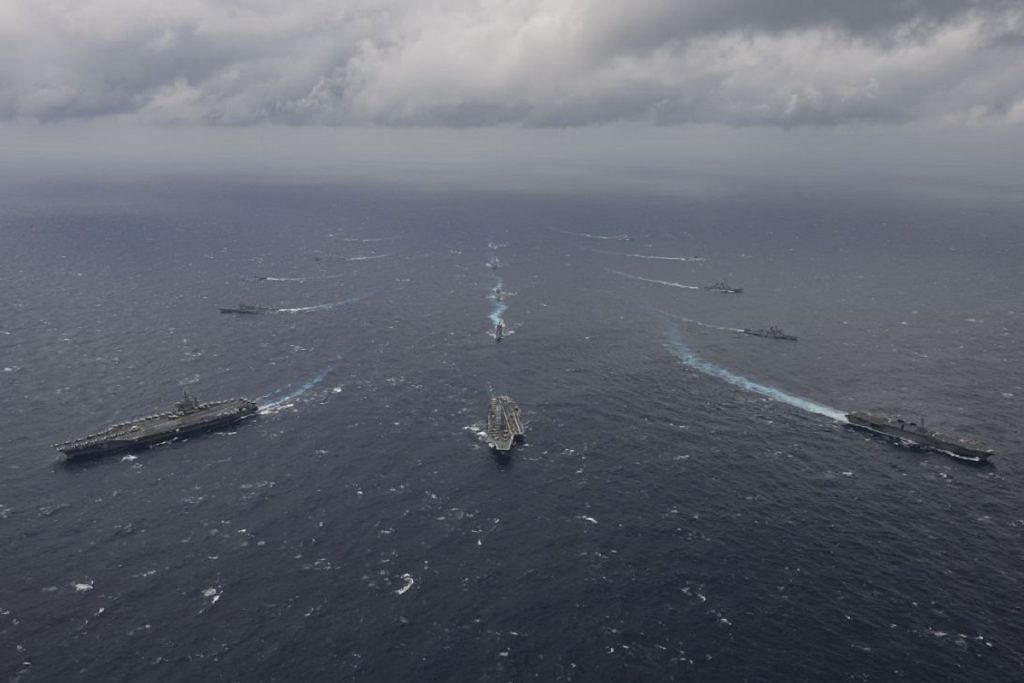New Delhi: India should invest rapidly in projects across the Indo-Pacific, similar to what China is doing, if it wants to secure its regional security even as it balances its bilateral relationship with China, states a report authored by Dhruva Jaishankar, director, US Initiative, Observer Research Foundation (ORF).
“While India cannot stop Chinese investment and lending across the Indo-Pacific region, it can try to provide viable alternatives,” the report says. “Given that Indian resources by necessity will be focused on the near neighbourhood, India will have little choice but to partner with other countries.”
The report, Acting East: India in the Indo-Pacific, also calls on India to replicate the type of collaboration it has with Japan for coordinated projects in Sri Lanka, and with Russia for energy projects in Bangladesh among others.
“[A] healthy bilateral relationship with Beijing…will be better managed only if India can balance internally (both economically and militarily), preserve its regional position, and play a more meaningful role in the balance of power in the Indo-Pacific,” Jaishankar said in a tweet referring to the report that was released by Brookings India.
Strategy will allow India access to Chinese-built facilities
According to Jaishankar, if New Delhi continues to develop projects in its immediate neighbourhood by partnering with greater powers in the Indo-Pacific region, then India will be able to gain access to Chinese-built facilities in those countries as well as “dampen security competition”.
India needs to also build relationships with its neighbourhood in such a way that it will be able to obtain “assurances from host governments that potential dual-use facilities will not be used for military purposes”.
“Still, in many areas, not least Pakistan or parts of Central Asia, Indian leverage will be limited, and the prospect of greater strategic expansion by China will have to be countenanced,” the report notes.
It, however, also said that India should continue to work with China whenever possibilities present themselves. For instance, it adds, India can continue working with China-led institutions such as the Asian Infrastructure Investment Bank (AIIB) and the Shanghai Cooperation Organisation (SCO).
Also read: India can secure 5G networks with local technology, top security advisor Raghavan says
US most important security partner in the Indo-Pacific
According to the report, while India and the US are slowly and gradually developing their strategic relationship with enhanced military contacts post the Cold War era, it is the establishment of the 2+2 dialogue that happened in 2018 that has institutionalised highest-level dialogue between both countries.
“The United States is now the second-largest arms supplier to India in value, after Russia. In terms of interoperability, the two countries now conduct regular military exercises involving their armies, air forces, and navies, with a tri-service exercise being planned,” the report states. “The Malabar exercises involving the navies is most evolved and now includes Japan. The two armies conduct the Yudh Abhyas and Vajra Prahar exercises, involving special operations forces.”
The US is now the second-largest arms supplier to India in value, after Russia. Some of the major defence equipment that India has acquired from the US are C-17 heavy lift aircraft, C-130J tactical transport aircraft particularly suited for high altitude situations, P-8i maritime surveillance aircraft for the Indian navy, M777 light mobile artillery, and heavy-lift and attack helicopters.
The report also added that interoperability between the US and Indian forces has also improved with the conclusion of various bilateral defence agreements: Logistics Exchange Memorandum of Agreement (LEMOA) and Communications Compatibility and Security Agreement (COMCASA).
The report, however, stressed that “poor incentives for investment, commercial considerations, and political and bureaucratic hindrances” have acted as major stumbling blocks for deeper defence partnership between the US and India, including transfer of defence technology.
Also read: India’s foreign policy needs strategic autonomy and more ambition, experts say
